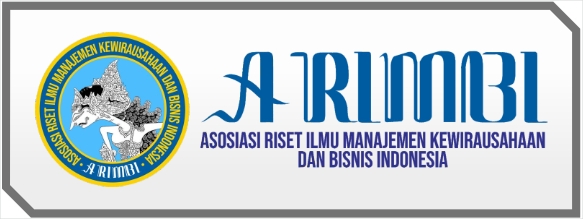Manajemen Terapi Dzikir pada Pasien Hipertensi
DOI:
https://doi.org/10.59581/jmki-widyakarya.v1i4.4436Keywords:
dhikir, management, therapyAbstract
The purpose of this study was to investigate how dhikr therapy can lessen psychopathological symptoms. Eighteen hypertension patients in all were chosen as volunteers and divided into two groups: experimental and control. While the control group (n = 9) was placed on a waiting list, the experimental group (n = 9) received the therapy. The Brief Symptoms Inventory (BSI), which measures psychopathological symptoms before therapy (pretest), after therapy (posttest), and during a two-week follow-up test, was administered to all participants. With Z = -3.339 and p = 0.000, data analysis using the Mann-Whitney U revealed a significant decrease in symptoms. The findings confirmed the theory that psychopathological symptoms were alleviated by dhikr treatment. This study concluded that spiritual therapy plays a significant influence in lowering psychological symptoms.
References
Abernethy, A. D., Chang, H. T., Seidlitz, L., Evinger, J. S., & Duberstein, P. R. (2002). Religious coping and depression among spouses of people with lung cancer. Psychosomatics, 43(5), 456-463.
Abu, H. O., McManus, D. D., Lessard, D. M., Kiefe, C. I., & Goldberg, R. J. (2019). Religious practices and changes in health-related quality of life after hospital discharge for an acute coronary syndrome. Health and Quality of Life Outcomes, 17(1), 105. https://doi.org/10.1186/s12955-019-1218-6
Adz-Dzakiey, H. B. (2007). Psikologi kenabian. Beranda Publishing.
Akrom, M. (2010). Zikir obat hati. Mutiara Media.
Al-Mahfani, M. K. (2006). Keutamaan doa dan zikir untuk hidup bahagia sejahtera. Wahyu Media.
Andreu, Y., Galdon, M. J., Dura, E., Ferrando, M., Murgui, S., Garcia, A., & Ibanez, E. (2008). Psychometric properties of the Brief Symptoms Inventory-18 (BSI-18) in a Spanish sample of outpatients with psychiatric disorders. Psicotema, 20, 844-850.
Anggun, M., Kusumawinakhyu, T., Wiharto, M., & Mustikawati, I. F. (2021). The effect of dhikr on anxiety and depression level in hemodialysis patients at Purwokerto Islamic Hospital. International Journal of Islamic Medicine, 2(1), 1-10. https://doi.org/10.37275/ijim.v2i1.17
Bennett, P. (2006). Abnormal and clinical psychology: An introductory textbook (2nd ed.). Open University Press.
Birhan, B., & Eristu, N. (2023). Positive religious coping and associated factors among participants with severe mental illness attending Felege Hiwot comprehensive specialized hospital, Bahir Dar, Ethiopia, 202. Psychology Research Behavior Management, 16, 45-56.
Busing, A., & Koenig, H. (2010). Spiritual needs of patients with chronic diseases. Religions, 1, 18-27.
Daniyarti, W. D., Thoriq, M., Pradana, E. B., & Safira, N. (2023). The concept of dhikr in Sufism and its practices and benefits in life. Journal Analytica Islamica, 12(2). https://doi.org/10.30829/jai.v12i2.18549
Derogatis, L. R. (2001). Brief Symptoms Inventory-18 (BSI-18). Pearson Clinical. http://www.pearsonclinical.com/psychology/products/100000638/brief-symptom-inventory-18-bsi-18.html
Dziegielewski, S. F. (2010). DSM-IV-TR in action (2nd ed.). John Wiley & Sons Inc.
Ellison, C. G., Finch, B. K., Ryan, D. N., & Salinas, J. J. (2009). Religious involvement and depressive symptoms among Mexican-Origin adults in California. Journal of Community Psychology, 37(2), 171-193.
Frude, N. (1998). Understanding abnormal psychology. Blackwell Publishing.
Gemeda, T. T. (2013). Psychopathological symptoms and predictors among inmates. Psychology and Behavioral Sciences, 2(4), 169-180.
Getzfeld, A. R. (2006). Essential of abnormal psychology. John Wiley & Sons, Inc.
Hawari, D. (2008). Al Quran: Ilmu Kedokteran jiwa dan kesehatan jiwa. PT. Dana Bhakti Prima Yasa.
Hidayat, A. I., Purnawan, I., & Efendi, F. (2023). Effect of combining dhikr and prayer therapy on pain and vital signs in appendectomy patients: A quasi-experimental study. Journal of Holistic Nursing, 2(1). https://doi.org/10.1177/08980101231180051
Hidayat, B., Rahman, A. A., Nugroho, S., Leybina, A., Muliadi, R., Listyani, N., & Lubis, L. T. (2023). Al Quran and dhikr: Are they effective to overcome anxiety caused by COVID-19 pandemic conditions? Psikis: Jurnal Psikologi Islami, 9(1). https://doi.org/10.19109/psikis.v9i1.16634
Husain, S. A. (1998). Religion and mental health from the Muslim perspective. In H. G. Koenig (Ed.), Handbook of religion and mental health (pp. 279-290). Academic Press.
Ibrahim, A., & Whitley, R. (2021). Religion and mental health: A narrative review with a focus on Muslims in English-speaking countries. BJPsych Bulletin, 45(3), 170-174. https://doi.org/10.1192/bjb.2020.34
Ilham, M. A. C., & Effendi, Y. (2012). 10 zikir pilihan rekomendasi Rasulullah. Qultum Media.
Ilham, M. A., & Effendi, Y. (2011). 4 zikir super dahsyat. Qultum Media.
Iqbal, A. M., & Jamal, S. F. (2023). Essential hypertension. National Library of Medicine. https://www.nlm.nih.gov/
Isgandarova, N. (2005). Islamic spiritual care in a health care setting. In A. Meier, T. S. J. O’Connor, & P. L. VanKatwyk (Eds.), Spirituality and health: Multidisciplinary explorations (pp. 85-102). Wilfrid Laurier University Press.
Kabbar, K. S., & Madinah, G. C. (2007). Berzikir kepada Allah. Sahadah Press.
Koenig, H. G. (2009). Research on religion, spirituality, and mental health: A review. The Canadian Journal of Psychiatry, 54, 283-291.
Kurhade, C., Jagannathan, A., Shivanna, S., & Varambally, S. (2022). Religion-based for mental health disorders: A systematic review. Journal of Applied Consciousness Studies, 10(1). https://doi.org/10.4103/ijoyppp.ijoyppp_14_21
Lucchetti, G., Koenig, H. G., & Lucchetti. (2021). Spirituality, religiousness, and mental health: A review of the current scientific evidence. World Journal of Clinical Cases. https://doi.org/10.12998/wjcc.v9.i26.7620
Marques, A., Ihle, A., Souza, A., Peralta, M., & De Matos, M. G. (2022). Religious-based intervention for depression: A systematic review and meta-analysis of experimental studies. Journal of Affective Disorders, 309, 289-299.
Martins, D. A., Coelho, P. D. L. P., Becker, S. G., Ferreira, A. A., Oliveira, M. L. C., & Monteiro, L. B. (2022). Religiosity and mental health as aspects of comprehensiveness in care. Revista Brasileira de Enfermagem, 75(1). https://doi.org/10.1590/0034-7167-2020-1011
Matthews, D. A., McCullough, M. E., Larson, D. B., Koenig, H. G., Swyers, J. P., & Milano, M. G. (1998). Religious and health status: A review of research and implications for family medicine. Archives of Family Medicine, 7, 118-124.
Mehraby, N. (2003). Psychotherapy with Islamic clients facing loss and grief. Psychotherapy in Australia, 9, 30-34.
Meijer, R. R., Vries, R. M., & Bruggen, V. (2011). An evaluation of the Brief Symptoms Inventory-18 using item response theory: Which items are most strongly related to psychopathological distress. Psychological Assessment, 23(2), 193-202. https://doi.org/10.1037/a0021705
Nugroho, S. T., Prastiwi, D., & Apriliani, R. P. (2023). Aplikasi terapi dhikir untuk menurunkan kecemasan pada pasien hipertensi di ruang penyakit dalam RSUD Kardinah Kota Tegal. Jurnal Manajemen Asuhan Keperawatan, 7, 40-44.
Rassool, G. H. (2021). Re-examining the anatomy of Islamic psychotherapy and counselling: Envisioned and enacted practices. Islamic Guidance and Counselling Journal, 4(2). https://doi.org/10.25217/igcj.v4i2.1840
Rayhan, A. (2017). Islamic habits: Daily practices to enhance spiritual and physical well-being. ResearchGate. https://www.researchgate.net/publication/373328863
Salim, I. M. (2006). Keajaiban istighfar. Mizan Publika.
Shihab, M. Q. (2007). Wawasan Al Quran tentang zikir dan doa. Lentera Hati.
Stewart, L. A., Harris, A., Wilton, G., Archambault, K., Cousineau, C., Varrette, S., & Power, J. (2010). An initial report on the results of the pilot of the Computerized Mental Health Intake Screening System (CoMHISS). Correctional Service of Canada.
Sundarrajan, I. B., Muthukumar, T., Raja, V. P., & Thresa, S. S. (2022). Mental health of hypertensive patients and its association with their blood pressure in a rural area of Kancheepuram district, Tamil Nadu. Journal of Family Medicine and Primary Care, 11(3). https://doi.org/10.4103/jfmpc.jfmpc_654_21
Swathi, M., Manjusah, S., Isatrin, J. V., & Gururaj, A. (2023). Prevalence and correlates of stress, anxiety, and depression in patients with chronic diseases: A cross-sectional study. Middle East Current Psychiatry, 30, 66-78. https://doi.org/10.1186/s43045-023-00340-2
Syafrowi, M. A. (2010). Nikmatnya istighfar. Mutiara Medis.
Taiwo, A. O. (2011). Predictor of psychopathology among Nigerian adolescents: The role of psychosocial, demographics, personality, and medical condition reports domains. African Health Sciences, 11(2), 228-239.
WHO. (2023). Depressive disorder. https://www.who.int/news-room/factsheets/detail/depression
WHO. (2023). Hypertension fact sheets. https://www.who.int/news-room/fact-sheets/detail/hypertension
Widyawati. (2021). Hipertensi penyebab utama penyakit jantung, gagal ginjal, dan stroke. Sehatnegeriku. https://sehatnegeriku.kemkes.go.id
Yucel, S. (2007). The effects of prayer on Muslim patient’s well-being (Doctoral dissertation). Boston University School of Theology.
Downloads
Published
How to Cite
Issue
Section
License
Copyright (c) 2023 Jurnal Manajemen Kreatif dan Inovasi

This work is licensed under a Creative Commons Attribution-ShareAlike 4.0 International License.













